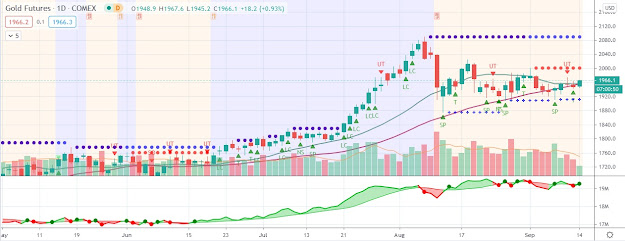Gold price sell-off was fueled not only by further sovereign debt fears in Europe, but also by the aftermath of the Federal Reserve’s latest monetary
 The gold price rose $13.40, or 0.9%, to $1,585.68 per ounce Thursday morning as financial markets bounced back from yesterday’s broad-based sell-off. The price of gold rebounded modestly as the euro currency snapped a three-day losing skid against the U.S. dollar. Equity markets in the U.S. were set to open considerably higher as well, with the S&P 500 futures contract up 1.0% at 1,218.75.
The gold price rose $13.40, or 0.9%, to $1,585.68 per ounce Thursday morning as financial markets bounced back from yesterday’s broad-based sell-off. The price of gold rebounded modestly as the euro currency snapped a three-day losing skid against the U.S. dollar. Equity markets in the U.S. were set to open considerably higher as well, with the S&P 500 futures contract up 1.0% at 1,218.75.Strength in the U.S. dollar also helped to pressure the gold price, as the greenback reached its highest level since January 12, 2011 against a basket of the world’s largest currencies. The euro concurrently dropped to a fresh 11-month low of 1.2982 against the dollar after the head of Germany’s central bank, Jens Weidmann, cautioned that the euro zone will not implement a quantitative easing program to combat the debt crisis. At a speech in Berlin, Weidmann stated that “One idea must finally be put aside, that of getting the needed money from the printing press.”
Wednesday’s gold price sell-off was fueled not only by further sovereign debt fears in Europe, but also by the aftermath of the Federal Reserve’s latest monetary policy meeting. HSBC analyst James Steel wrote in a note to clients that the Fed’s decision to not implement or even discuss the potential for a third round of quantitative easing (QE3) in the FOMC statement created a considerable headwind for the price of gold.
“Additionally, some macro hedge funds are liquidating gold holdings and taking profits in a difficult year,” Steel contended. “As trading volume typically drops toward year-end, we expect increasingly volatile price swings. Potential gold buyers may be reluctant to come forward as the year draws to a close. Gold could easily slide through the holidays.”
Perhaps most importantly for the gold price, it fell decisively below its 150 day moving average (DMA) for the first time since January of 2009. On nine occasions over the past 25 months, the price of gold tested and successfully held this level. Gary Kaltbaum, a Minyanville.com contributor, argued that this unsuccessful test is a significant bearish sign for gold.
“If it cannot get back above (the 150 DMA) within the next week, I would consider it a major breakdown of consequence,” Kaltbaum stated. “Very simply, the longer a trend lasts, the more the break is of importance. Also of importance, the 200 day moving average is just below at $157 in GLD. A break below there and we are talking the first bear market in gold since the bear of 08.”



Comments
Post a Comment